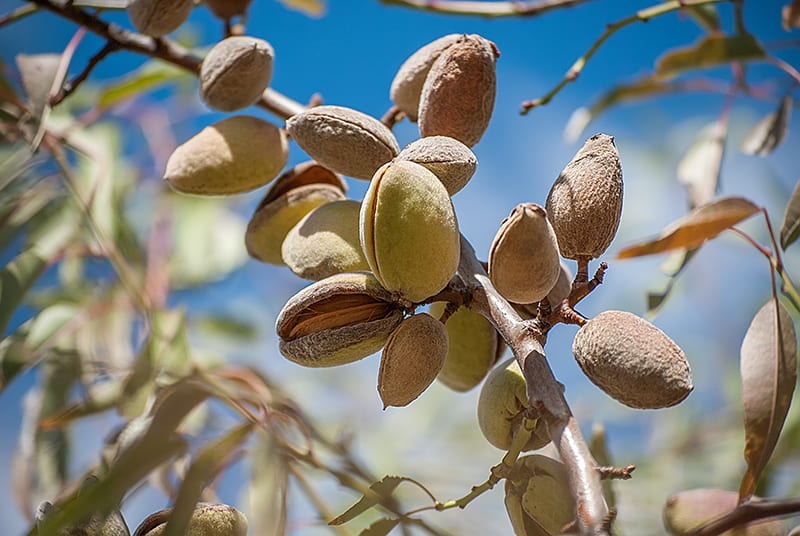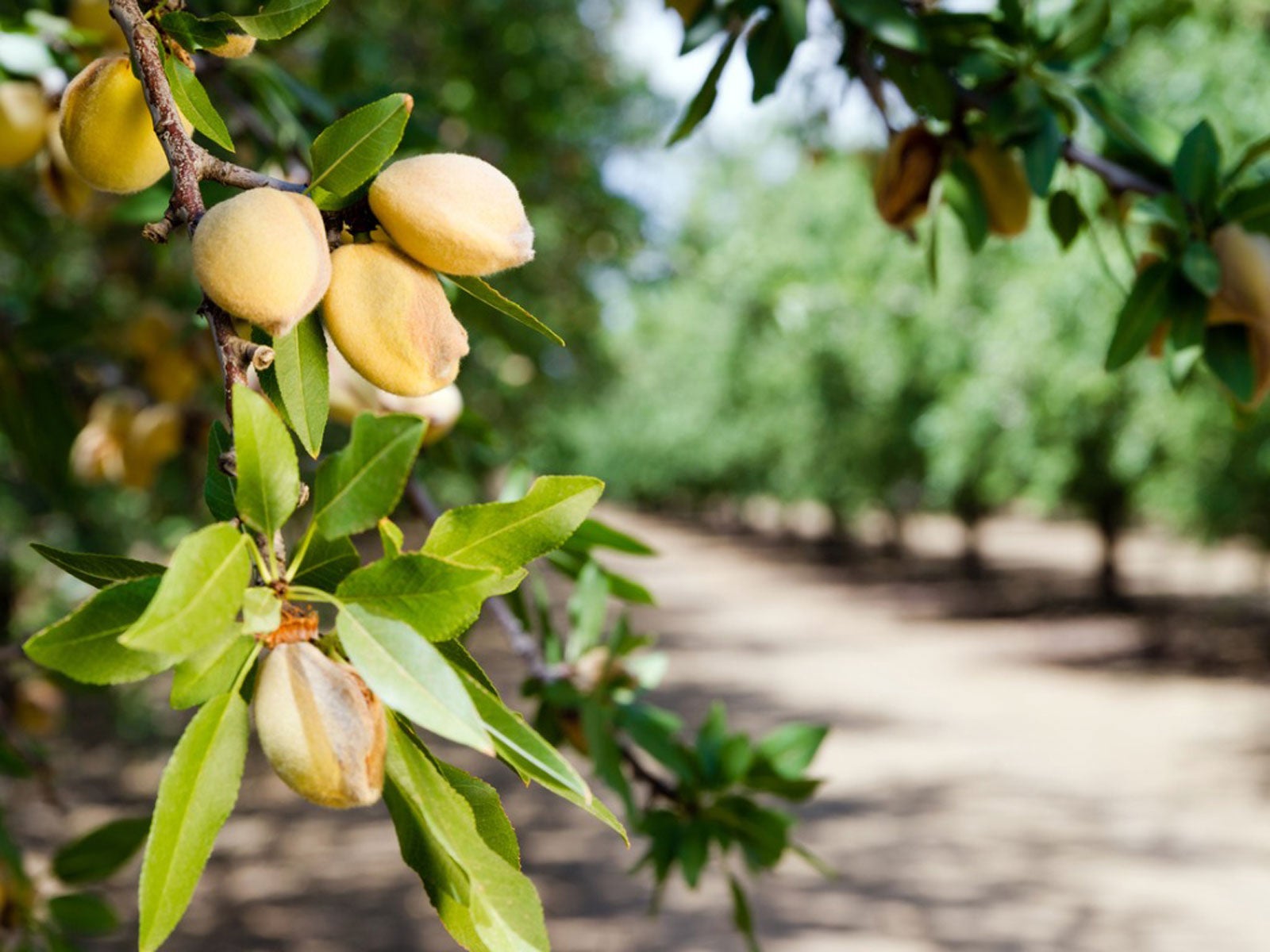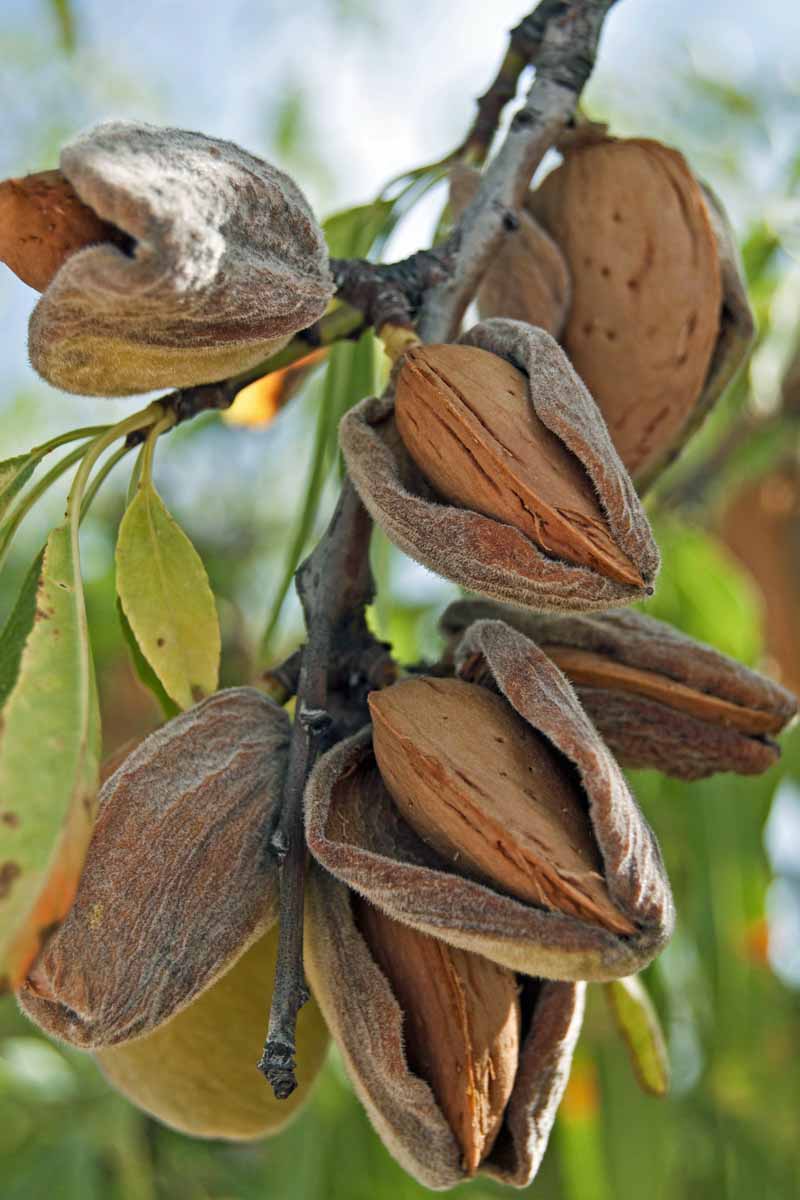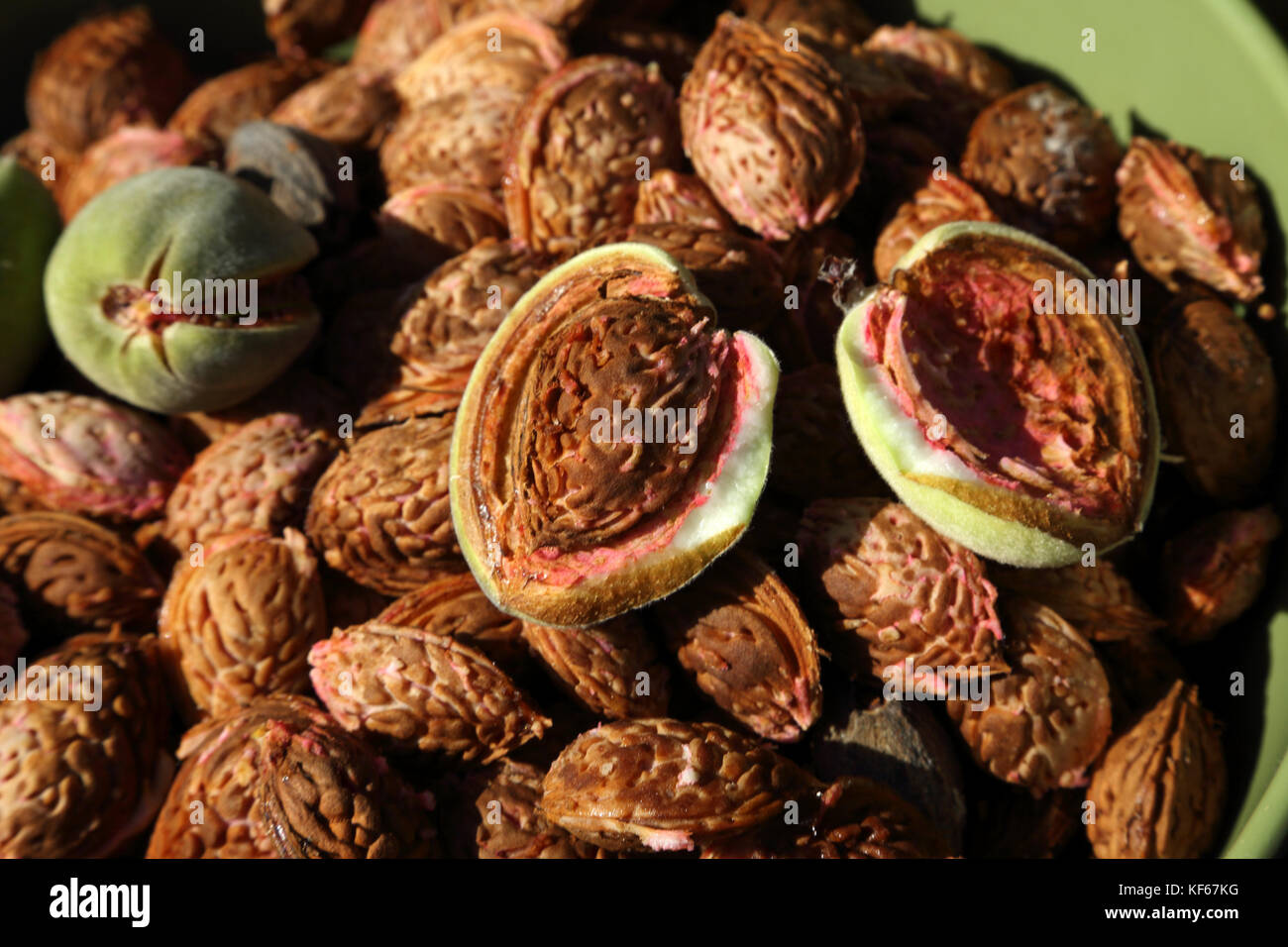Understanding the Basics of Almond Tree Cultivation
Almond trees are a popular choice for home gardeners and commercial growers alike, thanks to their attractive flowers, delicious nuts, and relatively low maintenance requirements. However, growing an almond tree from seed can be a challenging and rewarding experience. To increase the chances of success, it’s essential to understand the basics of almond tree cultivation, including climate, soil, and watering requirements.
Almond trees prefer a Mediterranean climate with warm, dry summers and cool, wet winters. They thrive in full sun and well-draining soil with a pH between 6.0 and 8.0. In terms of watering, almond trees require consistent moisture, especially during the first year after planting. However, they are relatively drought-tolerant once established.
Before attempting to grow an almond tree from seed, it’s crucial to understand the benefits and challenges of this method. On the one hand, growing from seed allows for greater control over the tree’s development and can result in a more robust and disease-resistant tree. On the other hand, the process can be time-consuming and may not produce a tree that is true to the variety of the parent tree.
For those who are willing to take on the challenge, growing an almond tree from seed can be a rewarding experience. With the right conditions and care, an almond tree can thrive and provide delicious nuts for years to come. In the next section, we’ll explore the process of growing an almond tree from seed in more detail, including the factors that affect the success of this method.
Can You Really Grow an Almond Tree from an Almond?
The question of whether it is possible to grow an almond tree from an almond is a common one, and the answer is yes, but with some caveats. Growing an almond tree from seed can be a challenging and unpredictable process, as the resulting tree may not produce fruit that is true to the variety of the parent tree. However, with the right conditions and care, it is possible to grow a healthy and productive almond tree from seed.
The process of growing an almond tree from seed involves several key steps, including selecting the right almond, stratifying the seed, and providing the right conditions for germination and growth. The success of this method depends on various factors, such as the quality of the seed, the climate and soil conditions, and the level of care provided to the tree.
One of the main challenges of growing an almond tree from seed is the low germination rate. Almond seeds have a hard outer shell that can make it difficult for the seedling to emerge. However, with proper stratification and care, it is possible to increase the germination rate and grow a healthy tree.
Another factor to consider when growing an almond tree from seed is the potential for genetic variation. Almond trees grown from seed may not produce fruit that is true to the variety of the parent tree, which can affect the quality and flavor of the almonds. However, this can also be an advantage, as it allows for the possibility of discovering new and interesting varieties.
Overall, growing an almond tree from seed can be a rewarding and challenging experience. While it requires careful planning and attention to detail, the potential rewards are well worth the effort. In the next section, we’ll explore the process of preparing an almond for planting, including how to select the right almond and how to stratify the seed.
How to Prepare an Almond for Planting
Preparing an almond for planting is a crucial step in growing a healthy and productive almond tree from seed. The process involves selecting the right almond, stratifying the seed, and planting it in a seed tray or pot. Here’s a step-by-step guide on how to prepare an almond for planting:
Step 1: Select the Right Almond
Choose a fresh and healthy almond from a reputable source. Avoid almonds that are old, dry, or damaged, as they may not germinate well. Look for almonds with a hard, brown shell and a white or cream-colored interior.
Step 2: Stratify the Seed
Almond seeds have a hard outer shell that can make it difficult for the seedling to emerge. Stratification involves simulating the natural process of winter chill to break down the seed coat and encourage germination. To stratify the seed, place the almond in a plastic bag or airtight container with a moist paper towel. Store the bag or container in the refrigerator at a temperature of around 40°F (4°C) for 30 to 60 days.
Step 3: Plant the Almond
After stratification, remove the almond from the refrigerator and plant it in a seed tray or pot filled with a well-draining seed starting mix. Plant the almond about 1 inch deep and 1 inch apart from other seeds. Water the soil gently but thoroughly. Keep the soil consistently moist but not waterlogged.
Step 4: Provide the Right Conditions
Place the seed tray or pot in a warm and sunny location with a temperature of around 70°F to 80°F (21°C to 27°C). Keep the soil consistently moist but not waterlogged. Avoid overwatering, which can lead to rot and poor germination.
By following these steps, you can prepare an almond for planting and increase the chances of successful germination and growth. Remember to provide the right conditions for germination and growth, including temperature, humidity, and light requirements. In the next section, we’ll discuss the importance of providing the right conditions for germination and growth.
Providing the Right Conditions for Germination and Growth
Once the almond seed has been planted, it’s essential to provide the right conditions for germination and growth. The ideal environment for an almond seedling includes a temperature range of 65°F to 75°F (18°C to 24°C), high humidity, and bright, indirect light.
Temperature is a critical factor in the germination process. Almond seeds typically require a period of cold stratification to break down the seed coat and encourage germination. After stratification, the seedling should be kept in a warm and stable environment to promote healthy growth.
Humidity is also essential for germination and growth. Almond seedlings prefer a humid environment, typically above 50%. To maintain the right humidity level, you can cover the seed tray or pot with a clear plastic bag or a cloche.
Light is another crucial factor in the growth of an almond seedling. While direct sunlight can be too intense, bright, indirect light is ideal for promoting healthy growth. East- or west-facing windows are perfect for providing the right amount of light.
In addition to temperature, humidity, and light, the soil quality and watering schedule also play a critical role in the growth of an almond seedling. The soil should be well-draining and rich in organic matter, and the watering schedule should be consistent and gentle.
By providing the right conditions for germination and growth, you can increase the chances of successful growth and development of your almond tree. In the next section, we’ll discuss common challenges that may arise when growing an almond tree from seed and offer solutions and tips on how to overcome them.
Common Challenges and Solutions When Growing an Almond Tree from Seed
While growing an almond tree from seed can be a rewarding experience, it’s not without its challenges. Here are some common issues that may arise and some solutions to help you overcome them:
Low Germination Rates
One of the most common challenges when growing an almond tree from seed is low germination rates. This can be due to a variety of factors, including poor seed quality, inadequate stratification, or insufficient moisture. To improve germination rates, make sure to use fresh and healthy seeds, provide adequate stratification, and maintain consistent moisture levels.
Pests and Diseases
Pests and diseases can be a significant problem when growing an almond tree from seed. Common pests include aphids, whiteflies, and spider mites, while diseases such as powdery mildew and root rot can also occur. To prevent pests and diseases, use organic pest control methods whenever possible, and maintain good hygiene practices, such as disinfecting your tools and equipment.
Slow Growth
Almond trees grown from seed can sometimes experience slow growth, which can be due to a variety of factors, including inadequate light, poor soil quality, or insufficient watering. To promote healthy growth, make sure to provide your tree with plenty of light, use well-draining soil, and maintain consistent moisture levels.
By being aware of these common challenges and taking steps to prevent them, you can increase the chances of success when growing an almond tree from seed. In the next section, we’ll discuss how to care for your almond tree as it grows, including pruning, watering, and fertilizing.
Nurturing Your Almond Tree: Pruning, Watering, and Fertilizing
As your almond tree grows, it’s essential to provide regular maintenance to ensure its overall health and productivity. Pruning, watering, and fertilizing are critical components of almond tree care, and can make a significant difference in the tree’s performance.
Pruning
Pruning is an essential part of almond tree care, as it helps to promote healthy growth, increase fruit production, and remove diseased or damaged branches. Prune your almond tree annually, removing any dead, diseased, or damaged branches. This will help to maintain the tree’s shape, promote air circulation, and encourage fruiting.
Watering
Almond trees require consistent moisture, especially during the first year after planting. Water your tree regularly, providing about 1 inch of water per week. Avoid overwatering, which can lead to root rot and other problems.
Fertilizing
Fertilizing is also crucial for almond tree health and productivity. Use a balanced fertilizer, such as a 10-10-10 formula, and apply it according to the manufacturer’s instructions. Avoid overfertilizing, which can damage the tree and the environment.
Regular Maintenance
In addition to pruning, watering, and fertilizing, regular maintenance is essential for almond tree health and productivity. Keep the area around the tree free of debris, and monitor the tree regularly for signs of pests or diseases.
By providing regular maintenance, including pruning, watering, and fertilizing, you can help to ensure the health and productivity of your almond tree. In the next section, we’ll discuss the timeline for growing an almond tree from seed, including the germination period, seedling stage, and maturity.
How Long Does it Take to Grow an Almond Tree from Seed?
One of the most common questions when growing an almond tree from seed is how long it takes to reach maturity. The answer depends on several factors, including the variety of almond tree, climate, soil quality, and maintenance.
Germination Period
The germination period for almond seeds typically ranges from 1 to 3 months, depending on the variety and conditions. During this time, the seed will begin to sprout and develop its root system.
Seedling Stage
After germination, the seedling will enter a period of rapid growth, during which it will develop its leaves, stem, and root system. This stage typically lasts from 6 to 12 months, depending on the variety and conditions.
Maturity
Almond trees grown from seed typically take 3 to 5 years to reach maturity, although some varieties may take longer. During this time, the tree will continue to grow and develop, producing flowers and eventually almonds.
Factors Affecting Growth Rate
Several factors can affect the growth rate of an almond tree grown from seed, including climate, soil quality, and maintenance. For example, trees grown in areas with mild winters and warm summers may grow faster than those grown in areas with harsh winters and cool summers.
Optimizing Tree Development
To optimize the development of your almond tree, make sure to provide it with the right conditions, including plenty of sunlight, water, and nutrients. Regular pruning and fertilization can also help to promote healthy growth and fruit production.
By understanding the timeline for growing an almond tree from seed, you can better plan and care for your tree, ensuring it reaches its full potential. In the next section, we’ll discuss the process of harvesting almonds from your homegrown tree.
Harvesting Almonds from Your Homegrown Tree
After years of nurturing your almond tree, the moment of truth has finally arrived – it’s time to harvest your homegrown almonds Harvesting almonds is a straightforward process, but it requires some care and attention to detail to ensure that your almonds are of the highest quality.
Identifying When the Almonds Are Ready
Almonds are typically ready to harvest in late summer or early fall, around 7-8 months after flowering. To check if your almonds are ready, gently shake the tree or tap on the branches. If the almonds fall off easily, they are ready to harvest.
Picking the Almonds
Use a small basket or bag to collect the almonds as they fall from the tree. You can also use a mechanical harvester, but this is not necessary for small-scale homegrown trees.
Drying and Storing the Almonds
After harvesting, it’s essential to dry the almonds to remove any excess moisture. You can do this by spreading them out in a single layer on a paper bag or tray and placing them in a warm, dry location. Once the almonds are dry, store them in an airtight container to preserve their flavor and texture.
Tips for Harvesting Almonds
Here are some additional tips to keep in mind when harvesting almonds from your homegrown tree:
Harvest almonds in the morning, when the dew is still present, to minimize the risk of damage from heat and sun.
Avoid harvesting almonds during periods of high wind or rain, as this can damage the tree and the almonds.
Use gloves when handling almonds to prevent oil from the skin from affecting the flavor and texture of the nuts.
By following these simple steps and tips, you can enjoy a bountiful harvest of delicious homegrown almonds from your very own tree.








